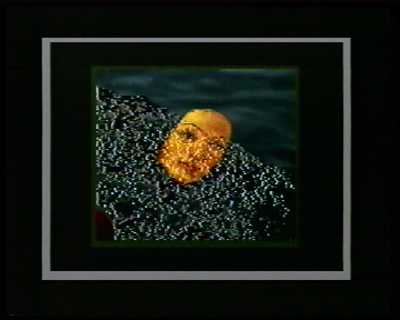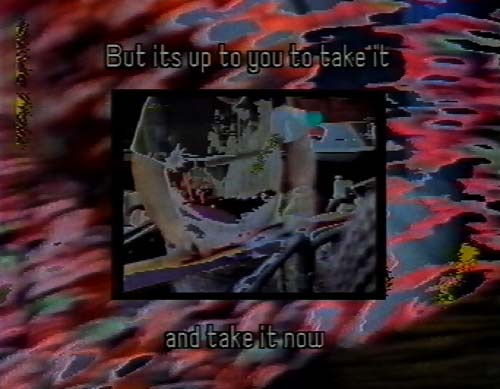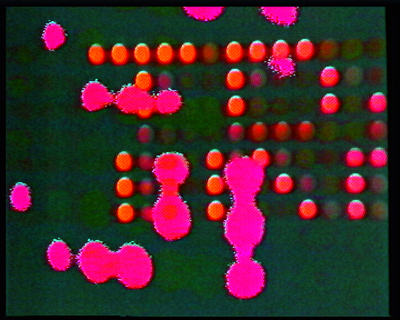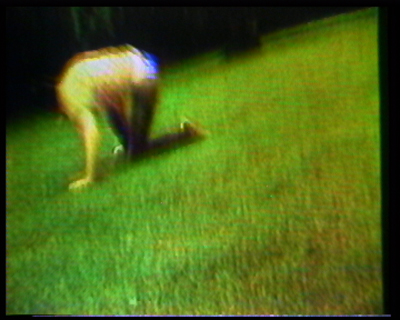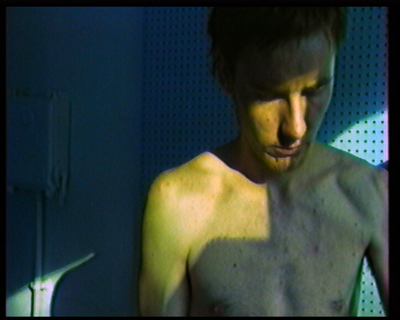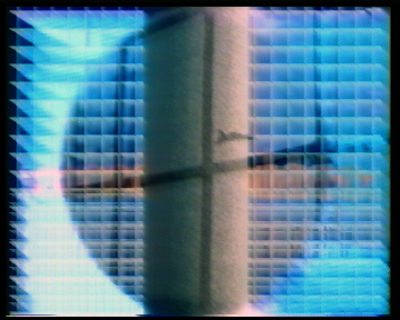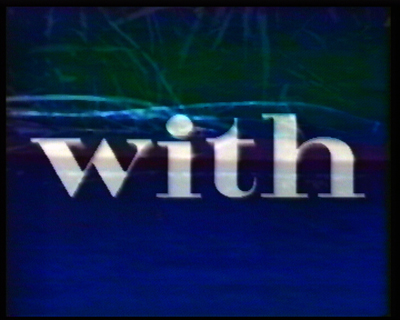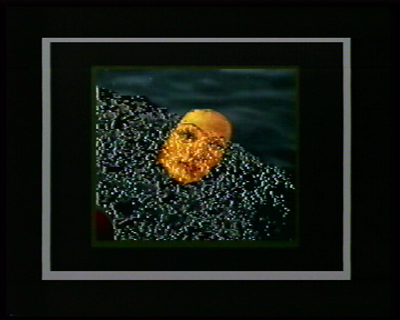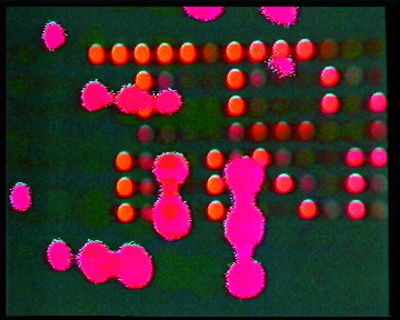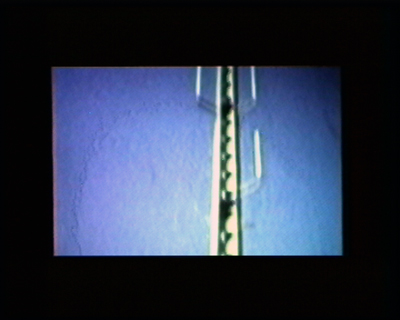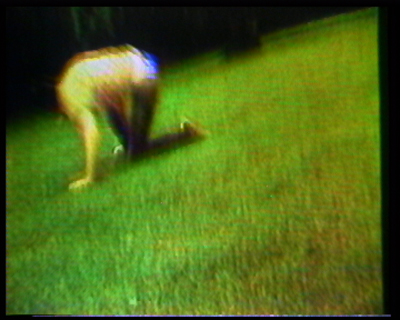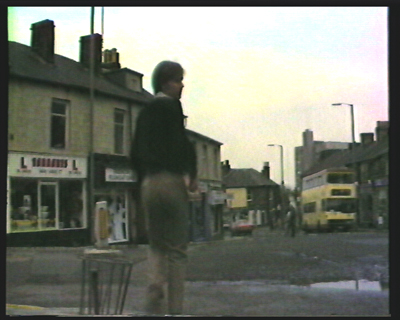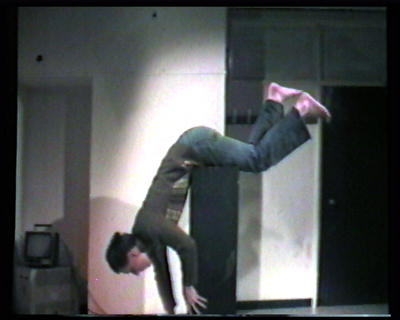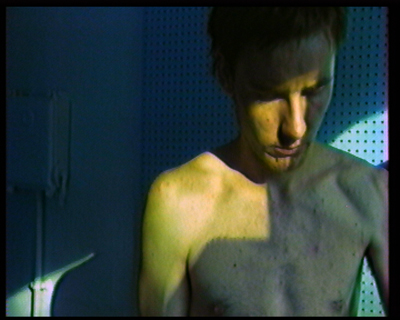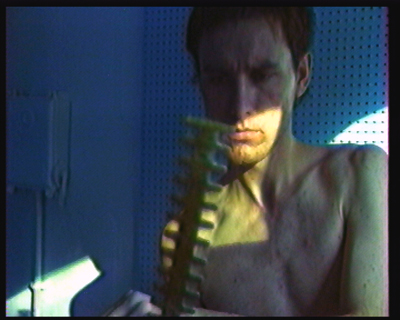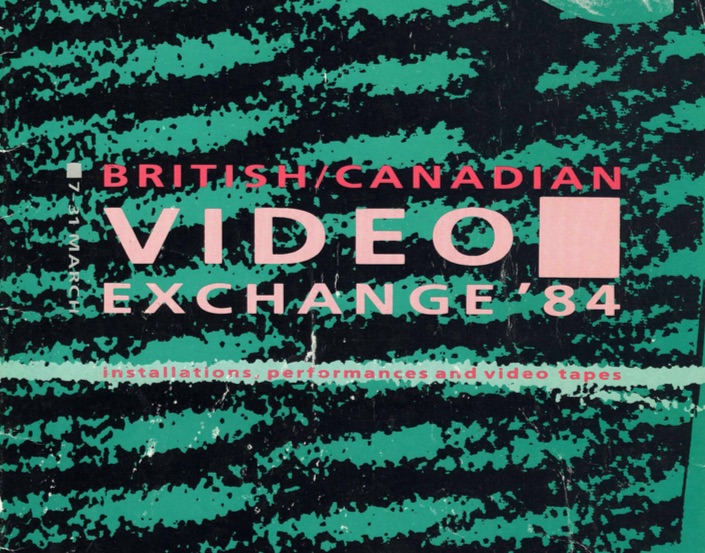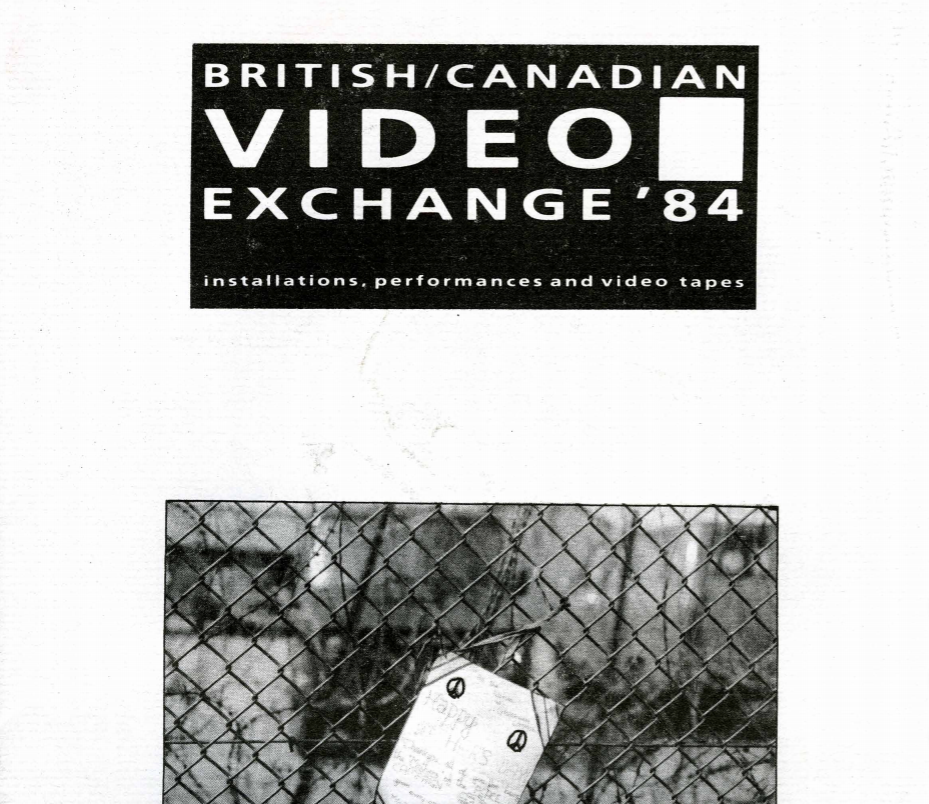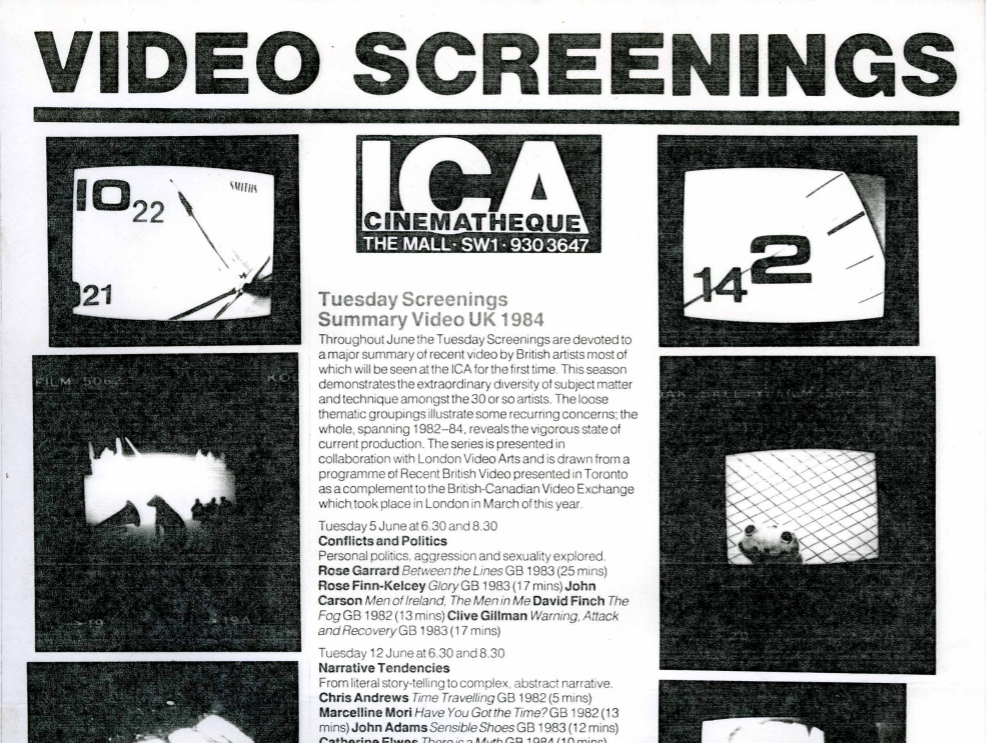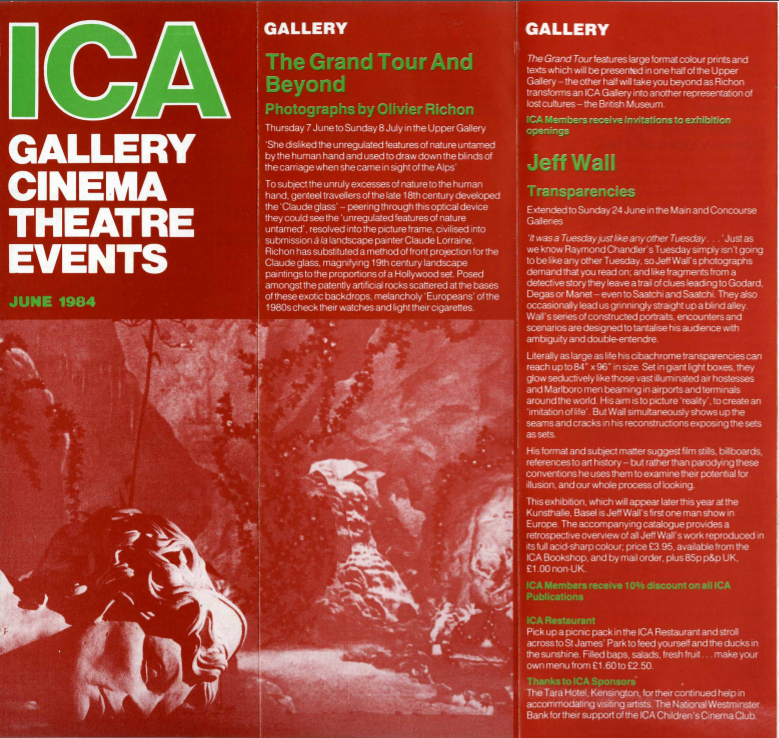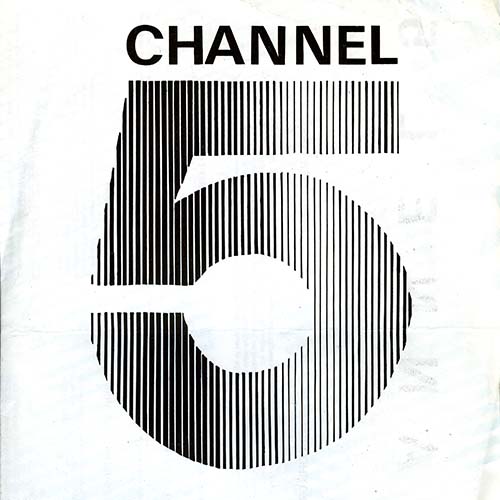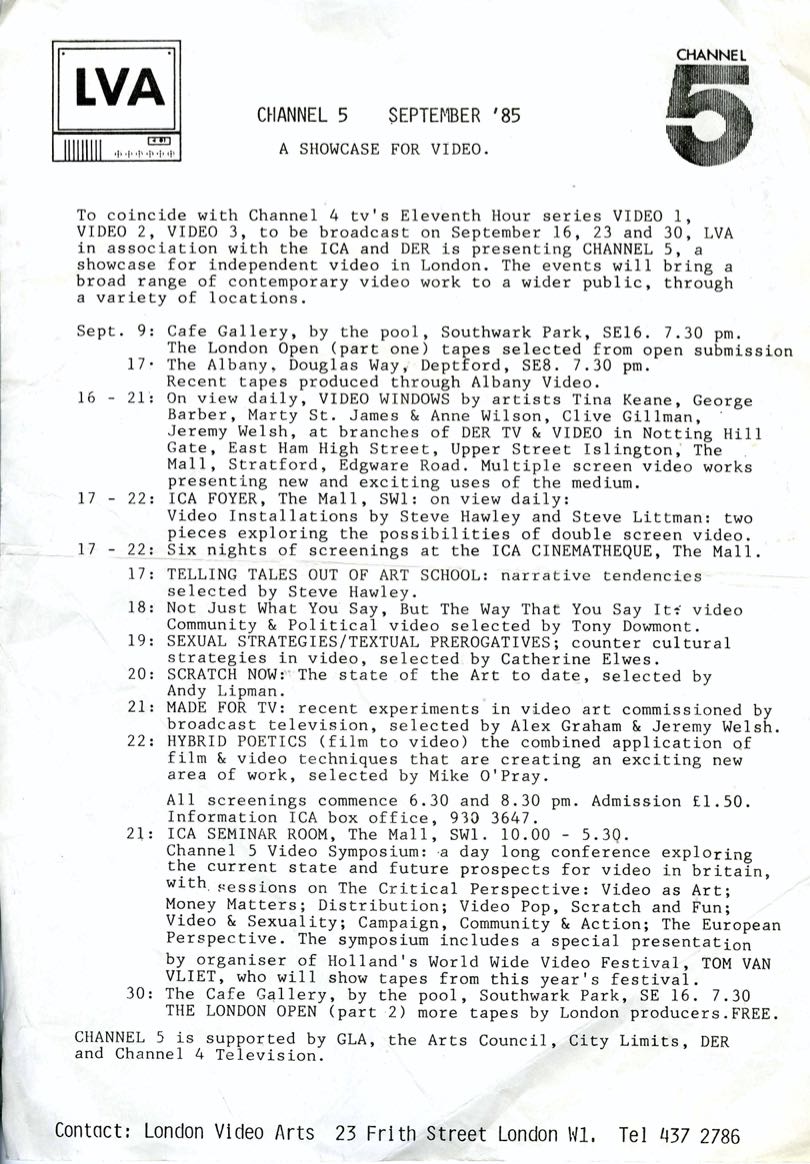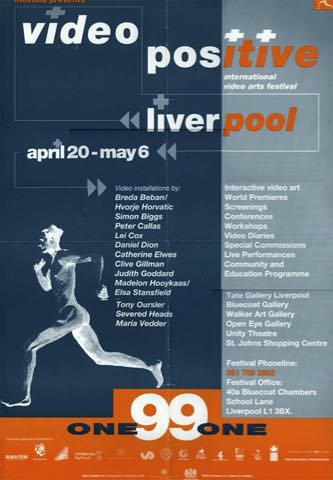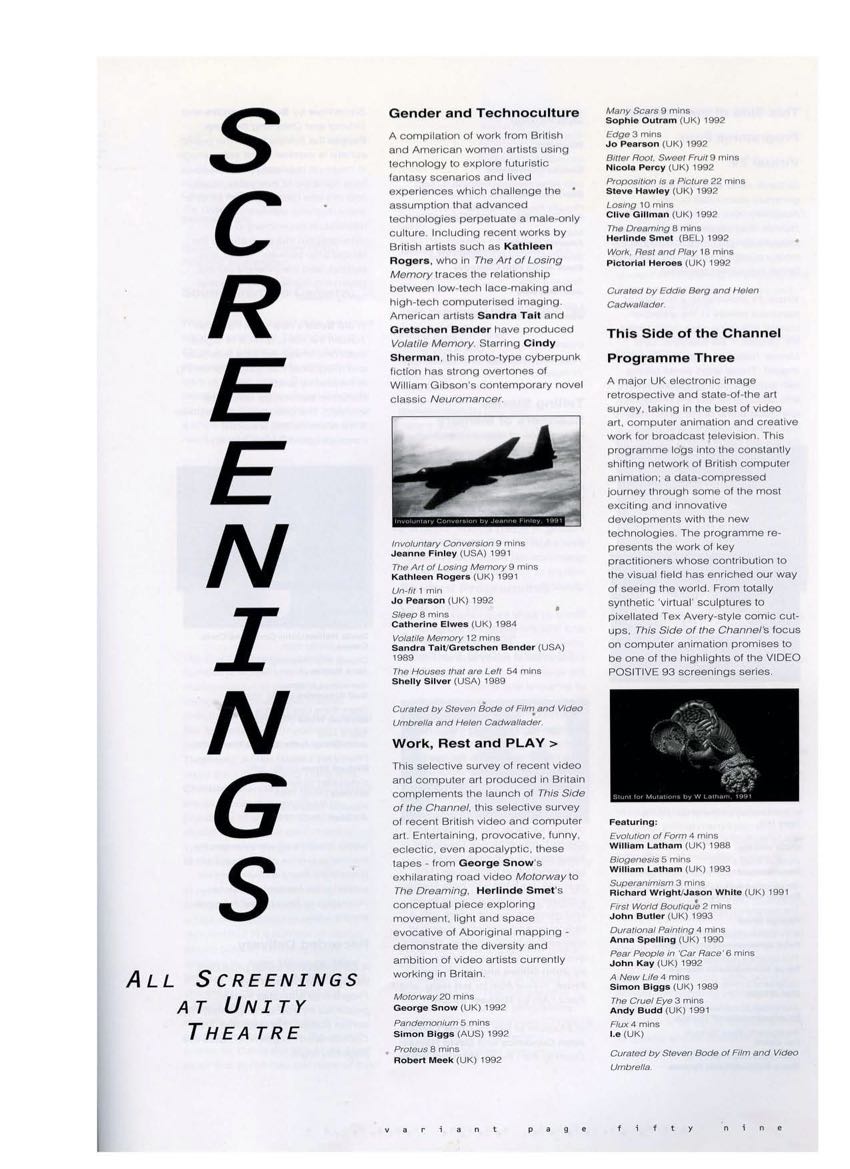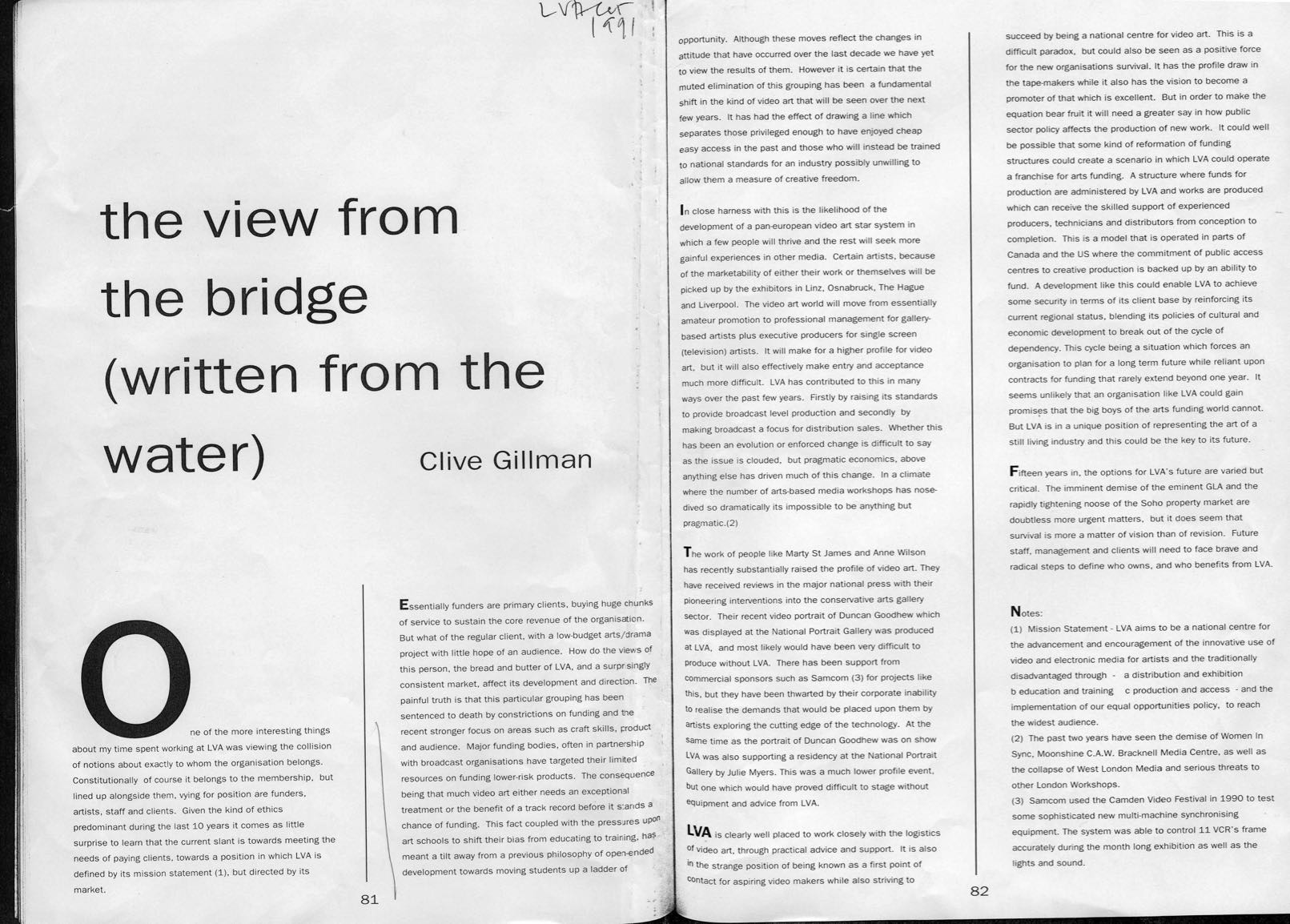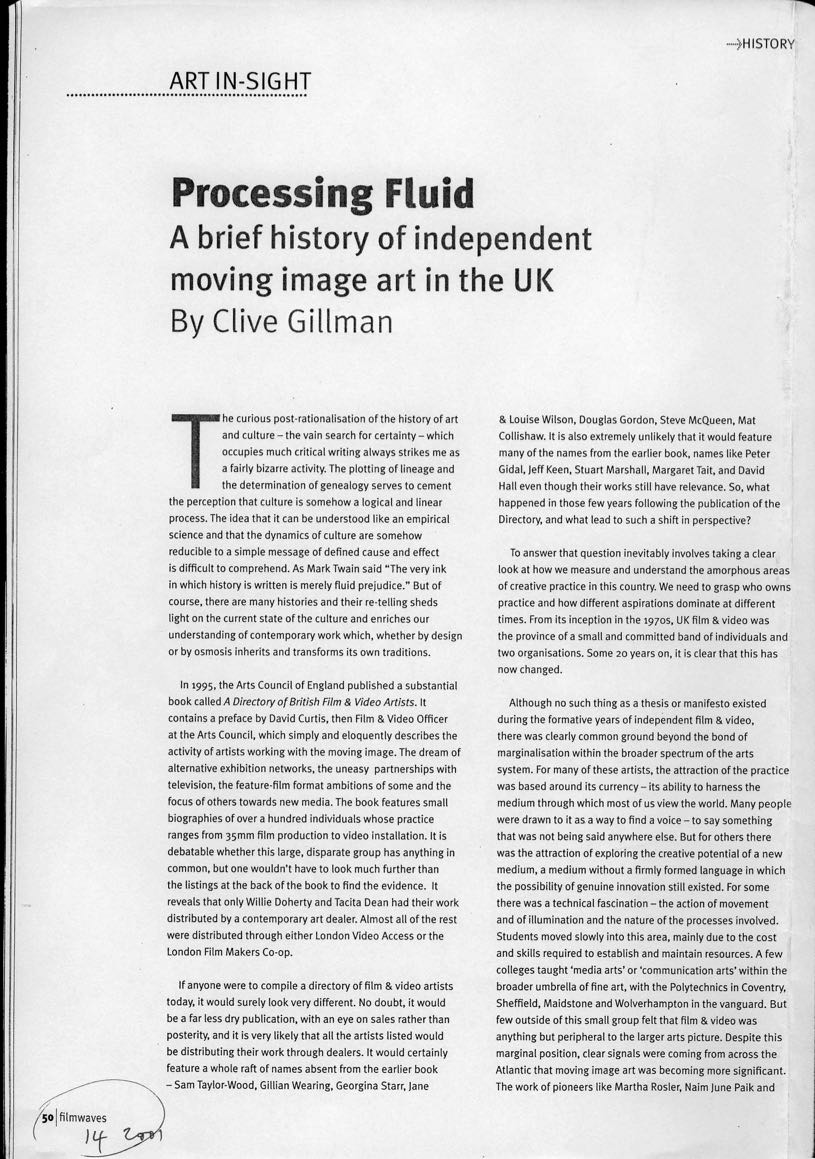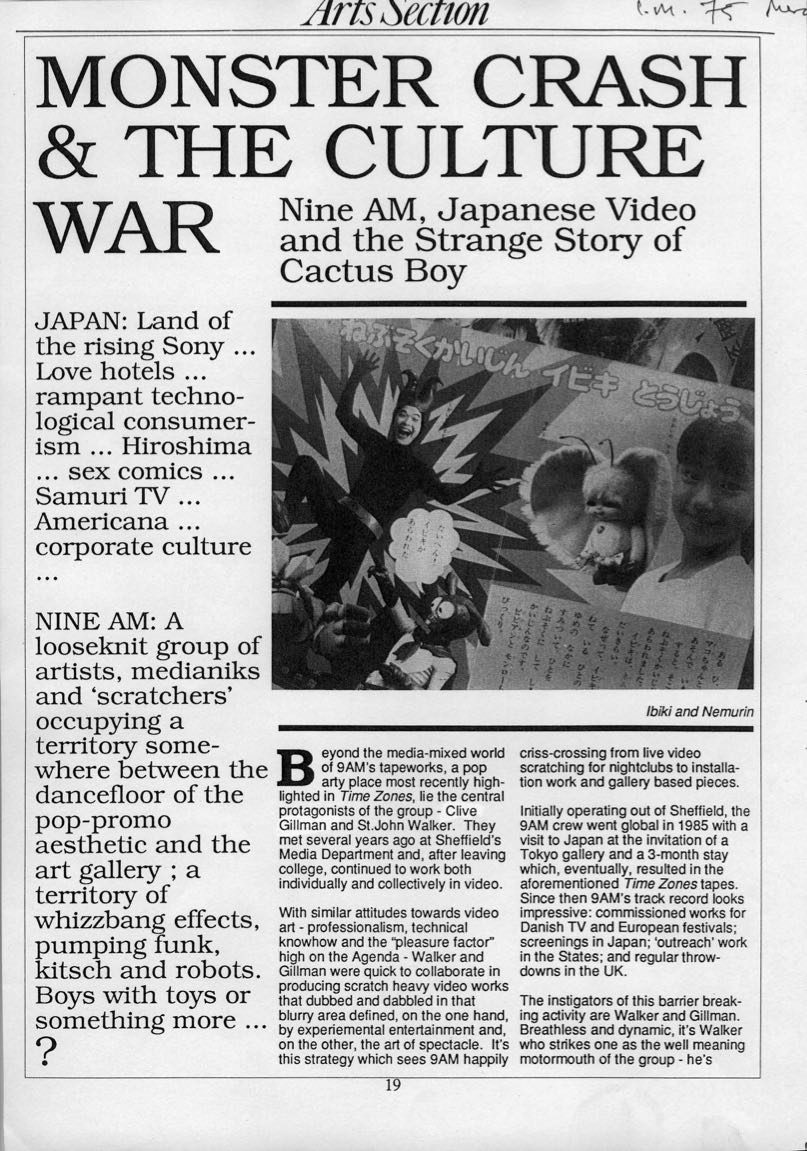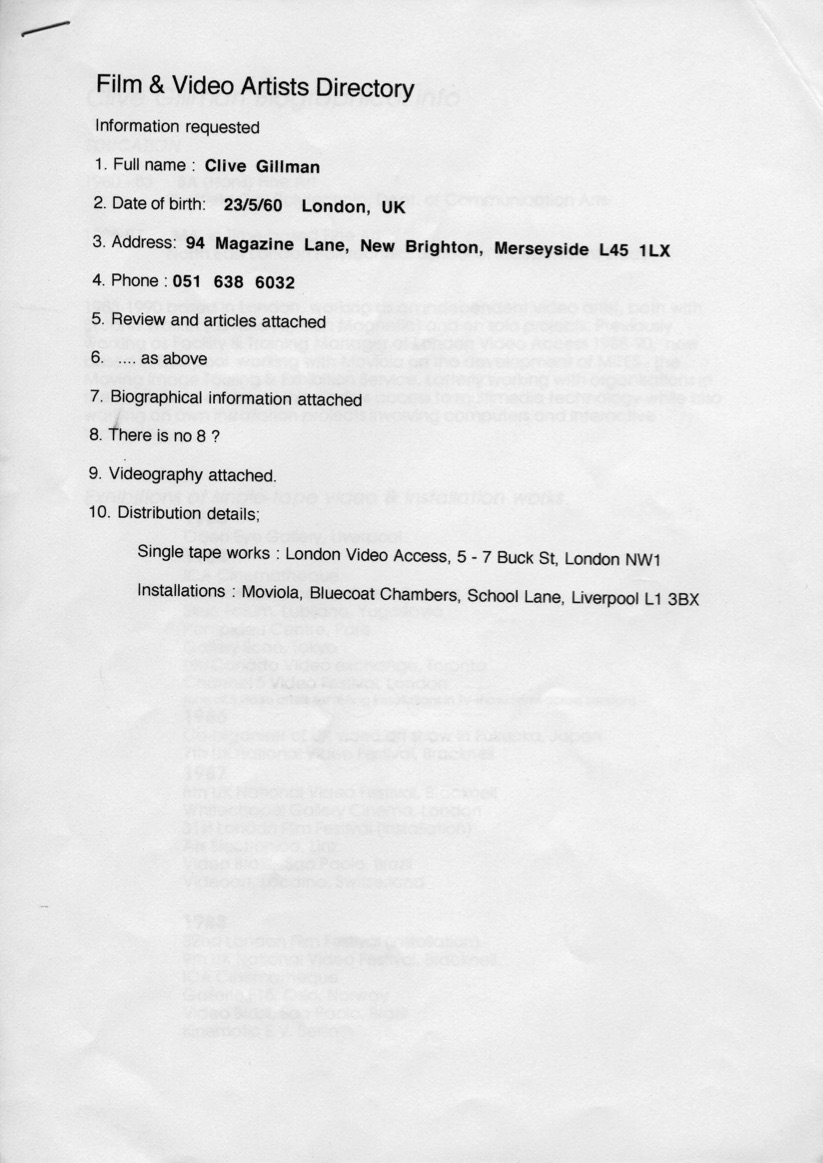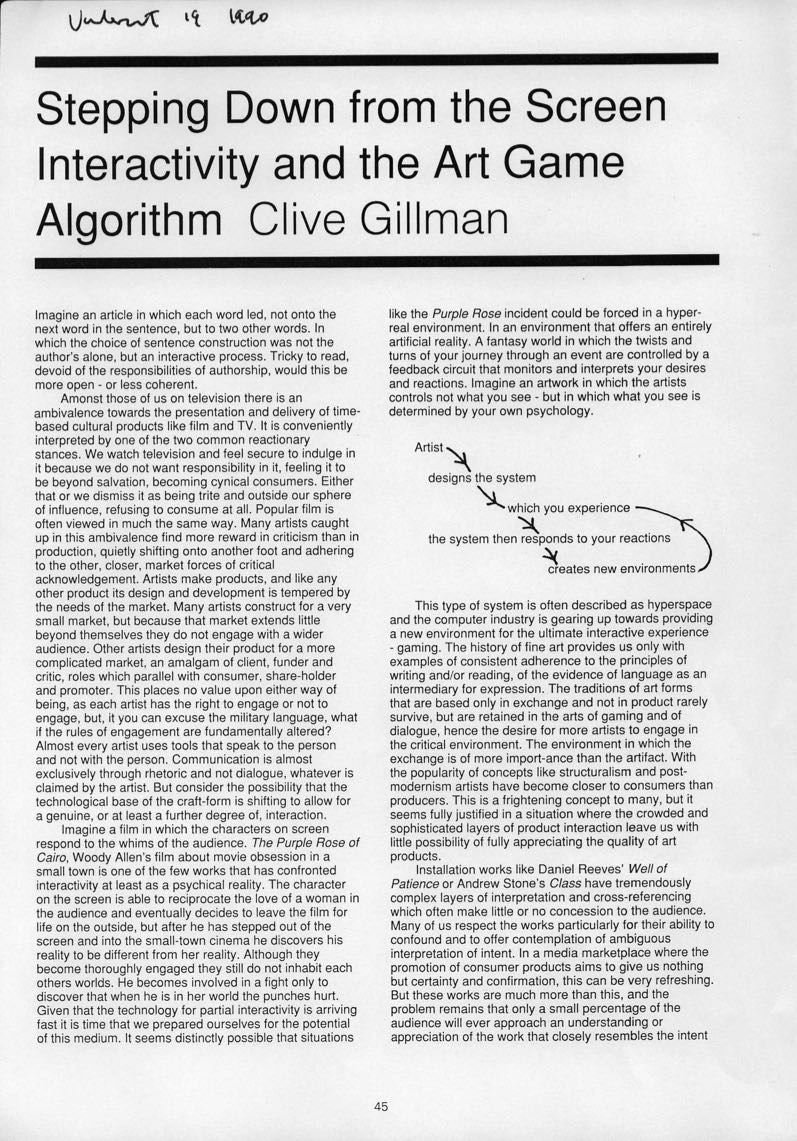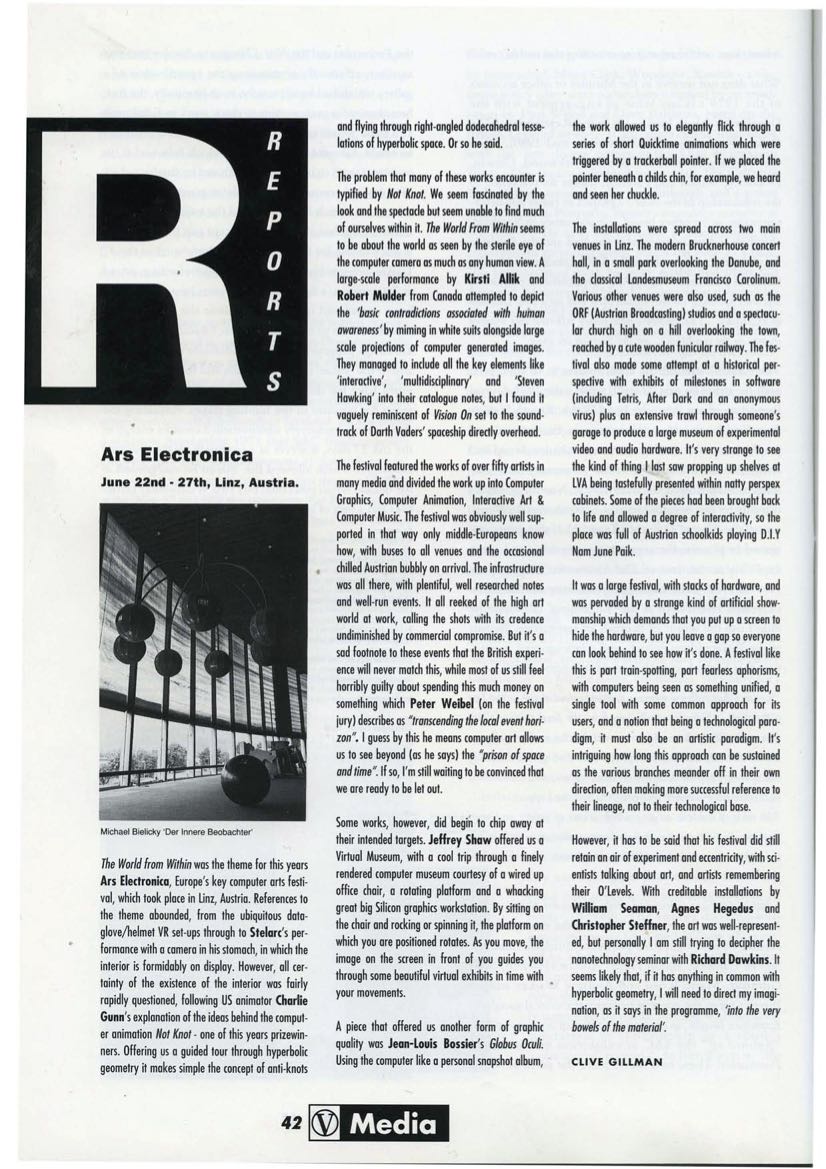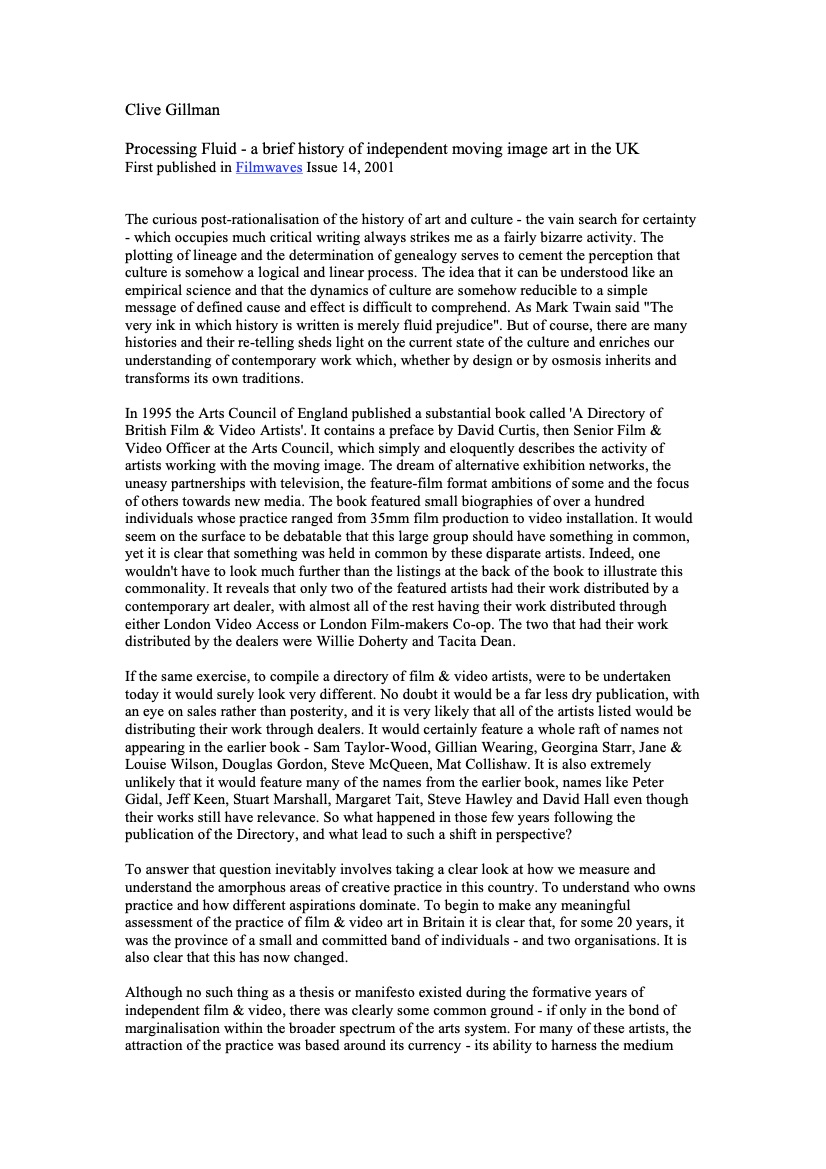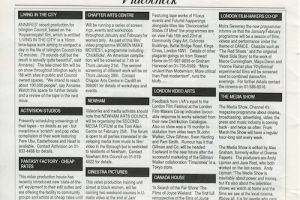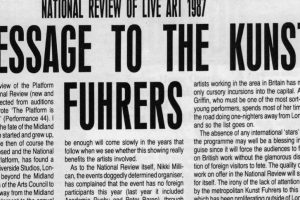Gillman, Clive
Clive Gillman works as an artist and is also Director of Creative Industries at Creative Scotland. He is former director of Dundee Contemporary Arts, Scotland’s largest arts and media centre. He has a background in working with media-based arts, both as an artist and also through working on the development of the cultural infrastructure in the UK. He has shown works internationally and most recently has developed a number of internet-based public art projects including ‘Metroscopes‘, a permanent public work in the centre of Liverpool.
From 1988 – 90 he worked at London Video Access* and taught at St.Martins School of Art and West Surrey College of Art & Design before moving to Liverpool in 1992 to set up a number of national initiatives, such as MITES (the national exhibition technology resource) and the New Tools workshop programme. (MITES is a technology support service for artists, supplying equipment, technical advice and training to over 1200 projects since 1992). During this time he has also initiated a number of research and development initiatives bringing together artists and technologists with support from NESTA, BTExact and Arts Council England.
From 1999 he worked on setting up the £11m FACT Centre in Liverpool, working to develop the concept and to fund-raise for the project and subsequently leading on the design team and establishing the staff and structure to take the project forward. He moved to take up the post at DCA in Feb 2005. He has spoken and written widely on topics such as new media culture, arts and regeneration and media literacy.
‘In the period following the name change to London Video Access, LVA found itself struggling on many fronts. Different parts of the organisation received funding from different sources and the core functions of the organisation became increasingly underwritten by the successful production and training activities (which received direct funding from Channel 4 and capital funding from the Arts Council as well as buoyant earned income). Alongside this the distribution wing of the organisation increasingly struggled to generate income from a museum and gallery sector who had a dwindling interest for the hire of works on videotape. It would be fair to say that any shift in strategic direction at this time was not determined as a matter of policy by LVA but was more as a result of attempting to locate ‘mixed-economy’ methods which would ensure the survival of loss-making activities such as the distribution service.’
-Clive Gillman commenting on this period.
-
Interview of Clive Gillman
View the interview transcript here
-
Videography:
Videotapes
1981
Three Frivolous Metaphors
Stereotypes (2 screen)1983
Meltdown – A Pop Video
W.A.R (Warning, Attack and Recovery)1986
Timezones
Electrical Development1987
Sad But new
Solid State Remains1988
Saboten Boi (collaborator 9 AM / St.John Walker)1989
NLV1 (Strange Attractor)1990
NLV6
NLV7 -
Artist works:
-
Artist assets:



